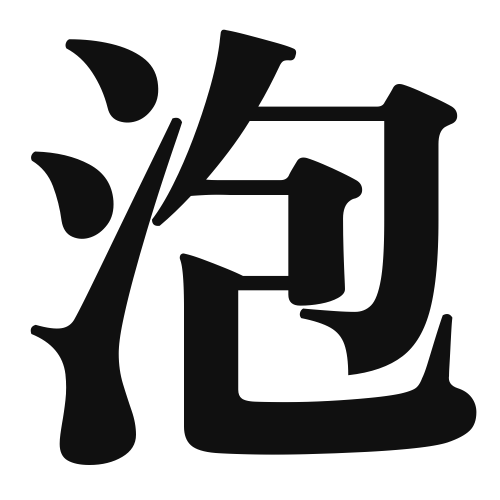1. Overview of Meaning
The kanji “泡” (awa) means “bubble” or “foam.” It refers to the small, air-filled pockets that form in liquids, often seen in beverages like soda or in natural phenomena like waves.
2. Formation and Radical
The kanji “泡” is a compound character (会意文字) that combines two elements: the radical for water (氵) and the character for “to float” (包). This combination reflects the idea of bubbles floating in water.
The radical of “泡” is氵, which is related to water, indicating its connection to liquids.
3. Examples of Usage
Common words and phrases that include “泡” are:
- 泡立てる (awatateru) – to whip or froth (as in making whipped cream)
- 泡風呂 (awaburo) – bubble bath
Example sentence in daily conversation:
「この飲み物は泡がたくさんある。」(Kono nomimono wa awa ga takusan aru.) – “This drink has a lot of bubbles.”
4. Synonyms and Antonyms
Similar kanji with related meanings include:
- 気泡 (kihō) – air bubble, which specifically refers to bubbles of air in a liquid.
Antonyms include:
- 固体 (kotai) – solid, which represents a state of matter that is the opposite of the fluidity associated with bubbles.
5. Cultural and Historical Background
In Japanese culture, “泡” is often associated with relaxation and enjoyment, particularly in the context of bubble baths and beverages. It symbolizes lightness and transience.
Proverbs and idiomatic expressions related to “泡” include:
- 「泡のような夢」(awa no yō na yume) – “a dream like a bubble,” which refers to dreams that are fleeting and insubstantial.
